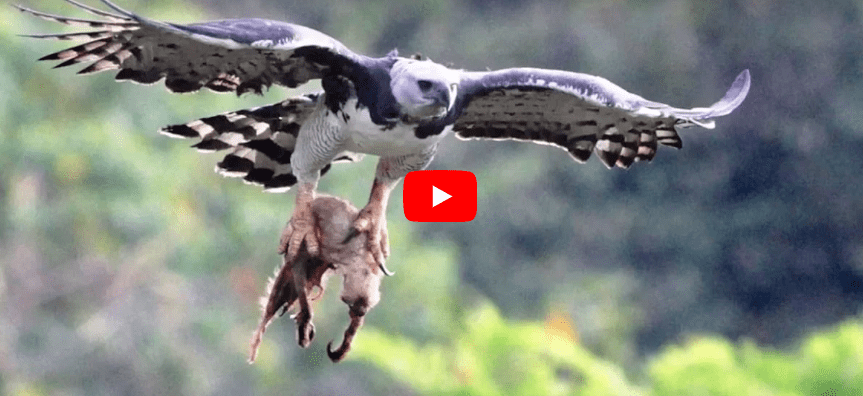In the dense rainforests of Central and South America, a majestic and formidable predator rules the skies: the Harpy Eagle (Harpia harpyja). This bird of prey, renowned for its immense size, powerful talons, and commanding presence, is not just a hunter of the canopy but a top predator capable of hunting and consuming monkeys, among other prey.
An Apex Predator of the Canopy
The Harpy Eagle stands as one of the largest and most powerful eagles in the world, with a wingspan that can exceed 7 feet (2.1 meters) and talons larger than those of a grizzly bear’s claws. This impressive stature allows it to dominate its forest habitat, where it navigates through the tangled branches with remarkable agility and precision.
Targeting Primates: A Specialized Diet
While the Harpy Eagle is known to prey on a variety of animals, including sloths, iguanas, and large birds like macaws, one of its most notable prey items is monkeys. Capuchin monkeys, howler monkeys, and even smaller primates like tamarins and marmosets fall within the eagle’s range of hunting targets. This ability to capture and consume primates underscores the Harpy Eagle’s status as an apex predator capable of taking down animals that are agile and highly arboreal.
Hunting Tactics and Strategy
The Harpy Eagle employs a patient and stealthy approach to hunting. It spends much of its time perched high in the canopy, scanning the forest floor and surrounding branches for signs of movement or sound. Once a potential prey item is spotted, the eagle swoops down with astonishing speed, using its powerful wings and talons to grasp its victim securely.
Swift and Deadly Strikes
When targeting monkeys, the Harpy Eagle’s attack is swift and calculated. It can strike with such force and precision that it can disable its prey almost instantly. Its talons, designed to exert immense pressure, can puncture through thick fur and muscle, delivering a fatal blow to the monkey before it has a chance to react.
Feeding Behavior
After securing its kill, the Harpy Eagle typically carries its prey to a secluded location within its territory. There, it uses its sharp beak to tear into the carcass, consuming the meat and occasionally feeding on smaller bones. This feeding behavior not only sustains the eagle but also plays a crucial role in regulating local primate populations, contributing to the ecological balance of its rainforest home.
Conservation Status and Cultural Significance
Despite its prowess as a predator, the Harpy Eagle faces threats from habitat loss and human activities such as logging and hunting. Efforts to conserve this magnificent bird are critical not only for its survival but also for the health of the ecosystems it inhabits.
Conclusion
The Harpy Eagle’s ability to hunt and consume monkeys exemplifies its role as a top predator in the rainforest canopy. With its impressive size, powerful talons, and specialized hunting tactics, this eagle stands as a symbol of both natural prowess and the delicate balance of predator-prey relationships in the world’s most biodiverse habitats. Understanding and appreciating the Harpy Eagle’s predatory behaviors not only enriches our knowledge of wildlife but also underscores the importance of conservation efforts to protect these magnificent birds and the ecosystems they call home.



